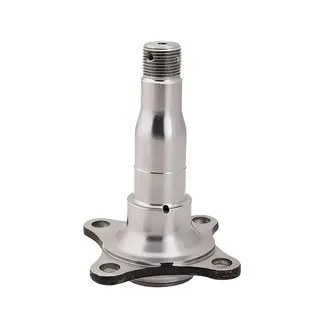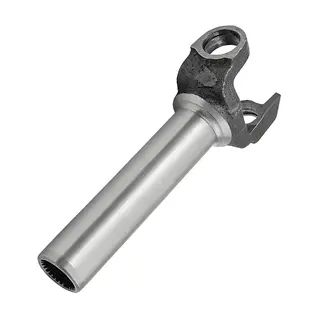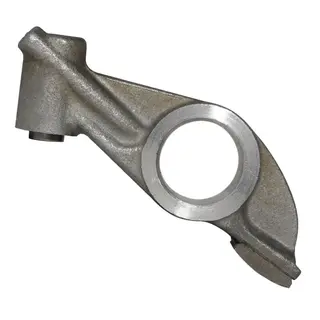In modern industrial production, forging machinery plays an indispensable role. By applying external force, it causes metal materials to deform, thereby achieving changes in shape, size, and performance. Whether for large castings or precision molds, forging machinery, with its powerful functions, can meet various production needs. This article will provide a detailed introduction to types of forging machinery, forging molds, heating and cooling equipment, and the application of automated production in forging, helping you fully understand this core power of metal processing.
Forging machinery comes in a wide variety. According to its working principles and process characteristics, it can be divided into impact hammers, press hammers, ring rolling hammers, pneumatic hammers, and others. Each of these devices has its own characteristics and is suitable for different forging processes and production requirements.
The impact hammer is one of the most widely used devices in the forging process. Through the high-speed striking of the hammer head, it forges the metal material into the desired shape. This equipment is especially suitable for forging large castings, as it can generate tremendous impact force to quickly complete metal deformation. For example, in the production of large marine engine crankshafts, the impact hammer can effectively forge metal billets into complex crankshaft shapes, ensuring their strength and performance.
The press hammer is mainly used for producing forging dies. Unlike the impact hammer, it gradually deforms the metal material by applying continuous pressure. This equipment is characterized by high precision and the ability to produce complex molds. In automobile manufacturing, press hammers are widely used for producing molds for engine blocks, transmission housings, and other complex parts. The precision of these molds directly affects the quality and performance of the final products, making press hammers irreplaceable in forging processes.
The ring rolling hammer is mainly used for producing ring-shaped forgings. Through a special ring rolling process, it rolls metal materials into rings and then forges them. This equipment is particularly suitable for producing large ring-shaped parts, such as engine blades and hubs in the aerospace industry. Ring rolling hammers ensure the dimensional accuracy and mechanical properties of ring-shaped forgings, meeting the demands of high-end industries.
The pneumatic hammer is mainly used for correcting forgings. During forging, forgings may develop surface defects or dimensional deviations. The pneumatic hammer uses precise striking to correct the forgings, ensuring they meet design requirements. This equipment is flexible to operate and can handle various complex correction tasks. For instance, in the production of precision mechanical parts, pneumatic hammers can finely process the surface of forgings, ensuring dimensional accuracy and surface quality.
Forging molds are indispensable auxiliary tools in the forging process. They control the shape and size of forging materials, ensuring the quality and precision of forgings. Forging molds are complex in structure and usually consist of upper and lower die holders, upper and lower templates, side pressure plates, mandrels, and base plates. These components work together to forge metal materials into the required shape.
Forging molds must possess high strength, toughness, and wear resistance, as well as strong heat resistance. During high-temperature forging, molds are subjected to extreme thermal and mechanical stresses. Therefore, the choice of mold material is crucial. Common mold materials include alloy steel and high-speed steel. These materials can maintain good performance in high-temperature environments, ensuring mold service life and forging quality.
Heating equipment is an essential auxiliary device in forging. It heats metal materials to a certain temperature, giving them sufficient plasticity and toughness. Common heating equipment includes resistance furnaces, high-frequency induction heating devices, and gas heat treatment furnaces.
When choosing heating equipment, factors such as the type, size, and required temperature range of the metal material must be considered. For small parts, high-frequency induction heating devices are ideal, as they can quickly heat metals to the required temperature while being efficient and energy-saving. For large castings, gas heat treatment furnaces are more suitable, as they can provide sufficient heat to ensure uniform heating of metal materials.
Cooling equipment is an auxiliary device in forging, used to quickly cool forgings, reduce their temperature, and improve their performance. Common cooling methods include natural cooling, water cooling, and air cooling.
When selecting cooling equipment, one must consider the type, size, and required performance of the forging materials. For example, for forgings requiring high hardness and wear resistance, water cooling is an effective choice. It rapidly reduces the temperature of the forging, forming a hardened surface layer. For forgings requiring dimensional accuracy, air cooling is more suitable, as it slowly lowers the temperature to avoid stresses and deformations caused by rapid cooling.
With the continuous development of industrial production, automation technology is increasingly applied in forging. For mass production and standardized products, automated forging production is especially important. Automated equipment improves production efficiency, reduces costs, and ensures product quality stability.
In automated forging production, an automatic feeding lifter is added in front of the heating equipment to automatically deliver metal billets into the heating system. The heating equipment is equipped with a temperature control system to ensure metals are heated within the proper range. Once temperature requirements are met, scale removal equipment removes furnace oxide from the surface of the forgings, after which automated manipulators grip and feed them into the main machine for forging. After forging, automated lubrication systems cool and lubricate the molds. Finally, conveyors transport the formed blanks into designated containers.
Forging equipment is diverse. Based on driving principles and process characteristics, the main types include forging hammers, hot die forging presses, free forging presses, upsetting machines, hydraulic presses, and rotary forming forging equipment.
A forging hammer uses the kinetic energy generated by the downward motion of the hammer head, hammer rod, and piston during the working stroke to strike the anvil and forge the blank. It is a constant-energy device, with output energy mainly derived from the expansion of gas in the cylinder and the potential energy of the hammer head under gravity. Forging hammers include air hammers, steam-air hammers, high-speed hammers, and hydraulic die-forging hammers.
The effective striking energy delivered by the hammer head (slider) is the key indicator of the load capacity and forging ability of hammer equipment. Within the forging stroke, the load-stroke characteristic curve is nonlinear—the closer to the end of the stroke, the greater the striking energy. During the deformation stage, energy release is sudden, giving forging its impact-forming characteristics. Since the hammer head (slider) has no fixed bottom dead center, forging accuracy relies on the mold.
The hot die forging press works based on the crank-slider mechanism. It uses a motor drive and mechanical transmission to convert rotary motion into reciprocating linear motion of the slider. Because it uses mechanical transmission, the slider has a fixed bottom dead center, and its speed and effective load vary with its position.
The process can only be achieved when the load required by the process is less than the effective load of the press. If the slider load exceeds the press’s effective load, stalling occurs, requiring overload protection. Forging accuracy depends on the transmission mechanism and frame rigidity.
The screw press uses a screw and nut as the transmission mechanism, converting the forward and reverse motion of the flywheel into the up-and-down motion of the slider through screw transmission. It is between the die-forging hammer and hot die forging press, with forging characteristics similar to a hammer. The slider stroke is not fixed, allowing return before the lowest position. The blow energy and number of blows can be controlled according to forging requirements.
In single-screw press die forging, the deformation resistance of the forging is balanced by the elastic deformation of the closed frame system, similar to hot die forging presses.
The upsetting machine, also known as a heading machine or horizontal forging machine, is structurally similar to the hot die forging press and also based on the crank press principle. However, its working part moves in a horizontal reciprocating motion. Driven by a motor and crank-link mechanism, two sliders move back and forth, one with a punch for forging, the other with a die for aligning the bar stock.
Upsetting machines mainly produce forgings by local upsetting. In addition to upsetting, they can also perform punching, bending, flanging, and cutting. They are widely used in producing forgings for automobiles, tractors, bearings, and aviation. Like hot die forging presses, they have strong rigidity, fixed strokes, and good dimensional stability in the length direction of forgings. They form parts under static pressure, with low vibration and no need for massive foundations, making them widely applied in mass forging production.
The hydraulic press uses hydraulic transmission, where a pump station converts electrical energy into fluid pressure energy. Through hydraulic cylinders and sliders (moving beams), it completes the forging process. It is a constant-load device, with output load determined mainly by the working pressure and cylinder area.
This equipment includes forging hydraulic presses and oil presses. Since the maximum load can be obtained at any position in the slider stroke, it is especially suitable for extrusion processes with nearly constant loads over long strokes. With a relief valve in the hydraulic system, overload protection is easily achieved. The hydraulic system is flexible, allowing adjustment of pressure and flow, and therefore different loads, strokes, and speeds, broadening the application of hydraulic presses and optimizing forging processes. Since the slider (moving beam) has no fixed bottom dead center, it can compensate for frame rigidity effects on forging dimensional accuracy. In recent years, advances in hydraulic technology and improvements in forging quality and precision have led to rapid development of hydraulic presses.
Driven by motors or mechanical transmission, in operation either the working part of the equipment or the forging itself rotates. This category includes cross wedge rolling machines, roll forging machines, ring rolling machines, spinning machines, swaging machines, and radial forging machines.
Blanks undergo localized stress and continuous local deformation, so less force and energy are required, making it possible to process larger forgings. Since parts rotate during processing, these machines are especially suitable for producing shaft, disc, and ring-shaped forgings with axial symmetry.
Forging machinery holds a vital position in modern industrial production. With various types of forging equipment, forging molds, heating and cooling equipment, and the application of automation, forging processes can meet diverse production needs and manufacture high-quality metal parts. Whether for large castings or precision molds, forging machinery, with its powerful functions and high efficiency, provides strong support for industrial production. As technology continues to advance, forging machinery will further develop and create more value for modern industry.



